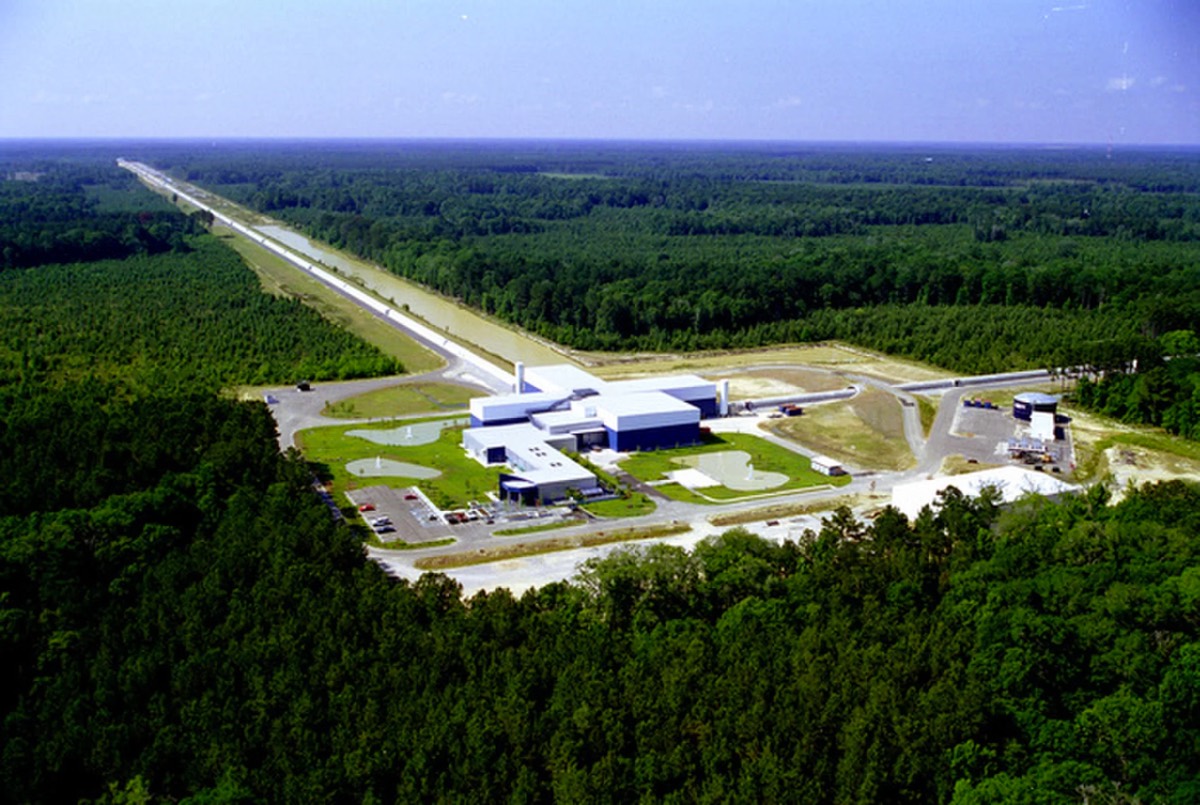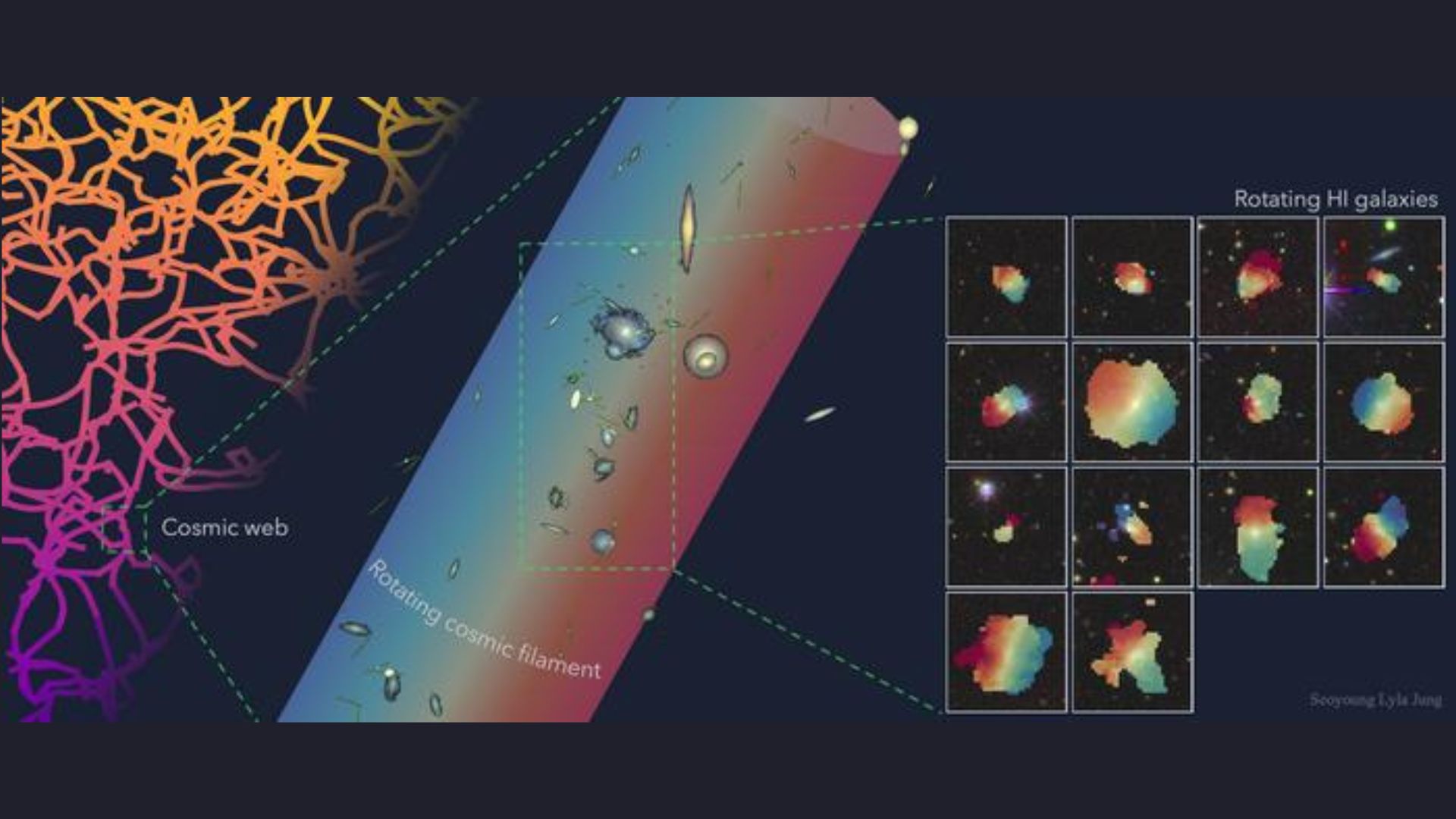
Quantum effects are pushing us around all the time, and we now have observational evidence of this somewhat disconcerting fact.
Researchers with the Laser Interferometer Gravitational-wave Observatory (LIGO) Scientific Collaboration have measured the tiny kick imparted to their exquisitely sensitive equipment by quantum fluctuations, a new study reports.
And that kick is indeed tiny, moving LIGO's 88-lb. (40 kilograms) mirrors just 10^-20 meters, the scientists found.
Related: Hunting gravitational waves: The LIGO project in photos
"A hydrogen atom is 10^-10 meters, so this displacement of the mirrors is to a hydrogen atom what a hydrogen atom is to us — and we measured that," study co-author Lee McCuller, a research scientist at the Massachusetts Institute of Technology's (MIT) Kavli Institute for Astrophysics and Space Research, said in a statement.
Other research groups have measured such quantum effects before, but never on this scale. The LIGO mirrors are about 1 billion times heavier than previously observed "kicked" objects, study team members said.
The LIGO project hunts for gravitational waves — the ripples in space-time caused by the acceleration of massive objects — using two detectors, one in Livingston, Louisiana and the other in Hanford, Washington.
Breaking space news, the latest updates on rocket launches, skywatching events and more!
Each detector is an L-shaped facility with legs 2.5 miles (4 kilometers) long. A laser at the crux of the "L" shines light down these legs, and 88-lb. mirrors at the end of each bounce the beams back. If the reflected beams arrive back at the crux at slightly different times, it's potential evidence of a gravitational wave distorting the fabric of space-time in the legs.
The LIGO team has used this strategy to great effect. The collaboration now has about a dozen confirmed gravitational-wave detections under its belt, including the first-ever such find, made in September 2015. Most of these events involve merging black holes, but two were caused by the collision of superdense, city-size stellar corpses known as neutron stars.
The LIGO detectors are incredibly sensitive and profoundly shielded from noise; they have to be, or else they'd be incapable of picking up gravitational waves. Making the groundbreaking 2015 detection, for example, required measuring a distance change 1,000 times smaller than the width of a proton, team members have said.
The new study harnesses that sensitivity and takes it to another level. The researchers, led by MIT physics graduate student Haocun Yu, used a "quantum squeezer," an add-on instrument they recently built allowing them to "tune" the quantum noise inside the detectors. That noise is created by minuscule particles popping into and out of existence, a constant crackling that pervades the universe.
"We think of the quantum noise as distributed along different axes, and we try to reduce the noise in some specific aspect," Yu said in the same statement.
The study team measured the total noise — both quantum and "classical," which is caused by ordinary vibrations — inside the detector. Then, with the aid of the squeezer, they subtracted out the classical noise during data analysis. This work revealed that quantum fluctuations in the laser light alone can move the detector mirrors, which hang from pendulums in a quadruple-suspension setup, by 10^-20 meters.
That number is in line with predictions made by theorists, team members said.
The new study, which was published Wednesday (July 1) in the journal Nature, has more than just gee-whiz appeal. The quantum squeezer allows the LIGO team to "manipulate the detector's quantum noise and reduce its kicks to the mirrors, in a way that could ultimately improve LIGO's sensitivity in detecting gravitational waves," Yu said.
Mike Wall is the author of "Out There" (Grand Central Publishing, 2018; illustrated by Karl Tate), a book about the search for alien life. Follow him on Twitter @michaeldwall. Follow us on Twitter @Spacedotcom or Facebook.

Michael Wall is a Senior Space Writer with Space.com and joined the team in 2010. He primarily covers exoplanets, spaceflight and military space, but has been known to dabble in the space art beat. His book about the search for alien life, "Out There," was published on Nov. 13, 2018. Before becoming a science writer, Michael worked as a herpetologist and wildlife biologist. He has a Ph.D. in evolutionary biology from the University of Sydney, Australia, a bachelor's degree from the University of Arizona, and a graduate certificate in science writing from the University of California, Santa Cruz. To find out what his latest project is, you can follow Michael on Twitter.
